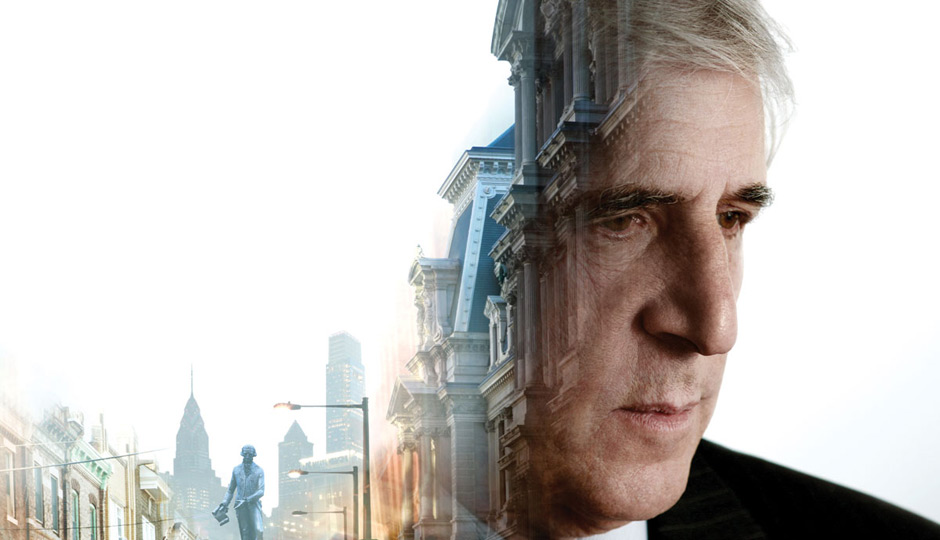How Paul Levy Created Center City
The smell. what could he do about the smell?
It was 1989, and Ron Rubin, the developer and quintessential Philadelphia power player, was lobbying Tiffany & Co. to open a shop in his newly renovated Bellevue-Stratford Hotel. A lot was riding on the Bellevue’s success—not just for Rubin, but for the whole of Center City. Rubin had snapped up the storied hotel on the cheap in 1978, just two years after the Legionnaire’s disease outbreak killed 34 guests. And he’d spent the past decade pouring cash into the old grande dame of Broad Street, with little to show for it. His company had missed loan payments. Too many rooms were vacant. Doubters said the building could never again make it as a hotel.
But Rubin was all in, to the tune of $100 million. He had converted 55,000 square feet into new retail space. And he wanted Tiffany & Co. as his anchor tenant, as proof that Center City could still attract an elite retailer.
But what to do about the stench?
Center City was awash in garbage: bulging Hefty bags, swirling pretzel wrappers, fetid dumpsters lurking in every alleyway. How could Rubin ferry the Tiffany executives from 30th Street Station to Broad and Walnut without revealing just how filthy Philadelphia had become? Rubin put a call in to Mayor Goode, and a route was arranged. For those few blocks, for a day or two, the mayor promised, the streets would be clean.
The farce worked. Tiffany signed on. More important, the episode convinced Rubin that Center City would have to save itself. If it took an act of mayoral intervention just to clean a few blocks, what hope was there that City Hall could get a handle on downtown’s other burgeoning problems? So in the months that followed, Rubin got on board with a plan that had been kicking around to create a special services district, and he shamed his fellow elites into joining the effort. To manage the organization, which would be funded by mandatory assessments on downtown commercial property, Rubin picked a guy he’d just met—Paul Levy, a candidate with a slightly peculiar résumé. His job: to accomplish what City Hall could not, and make downtown viable once more.
“It was sort of a Potemkin village situation,” Levy says, nearly a quarter-century later, from the Center City District’s offices on Chestnut Street, just west of Independence Hall. Rubin’s ruse was to paper over the “traumatic” reality, Levy says, of “litter everywhere, graffiti everywhere, crime that was out of control, the city in a fiscal crisis.”
Suddenly it was up to Levy—a virtual unknown on the public stage at the time—to soothe Center City’s grievous wounds.
First, Levy made Center City clean. Then he made Center City safe. From there, he remade Center City itself. With apologies to Ed Rendell, no Philadelphian is more responsible than Levy for transforming downtown from the hellhole of the 1980s to the archetype of intimate, walkable urbanity it’s become.
Look around and you’ll see Levy’s fingerprints all over downtown. The Avenue of the Arts. The restaurant culture. The condo boom. Even the streetscape has been remade to Levy’s liking. He’s under your feet, cleaning Center City’s concourses, and above your head, organizing the construction of the Reading Viaduct park. He has helped to unlock the vast potential of the Ben Franklin Parkway. And he has the audacity and clout to literally rebuild the front door to City Hall, with the $55 million reinvention of Dilworth Plaza (set for completion in 2014).
And that’s only half his portfolio. Levy’s Center City District also operates as a full-fledged Philadelphia think tank, publishing meticulously researched analyses that seep into countless policy debates and news articles. His organization is an often-copied template for similar entities around the nation. Levy himself has evolved into downtown’s general-purpose emissary, and probably the most effective advocate the city’s fractured business community has.
Put it all together—his SimCity-esque reshaping of downtown, his provision of basic public services, his command of the bully pulpit—and you see why many consider Levy the unelected, de facto mayor of Center City, or perhaps Philly’s version of Robert Moses, the legendary New York power broker who never held elected office but remade the metropolis in ways most mayors can only dream about.
“Almost everything we do, you can see on the ground,” Levy says. “Our work—it’s right there in front of you, and that’s a great feeling.”
At the same time, he is acutely aware that Center City isn’t all it can or should be. He knows better than most that our downtown still lags behind those in more prosperous cities. And his frustration over this fact is mounting, because his ability to close the gap is most likely diminishing. His priorities now are to change the fundamental city policies—principally the tax structure—that he considers to be the biggest hindrances to the continued growth and revitalization of the entire city.
It would be a mistake to underestimate Levy and his powerful allies in their campaign, but this isn’t a matter of remaking boulevards or designing gracious public spaces. Tax policy is, after all, a political matter. And Levy is, emphatically, not a politician. Winning this fight would arguably be the biggest victory of his career. Losing it? Well, it could mean that we have already seen Paul Levy’s peak.



